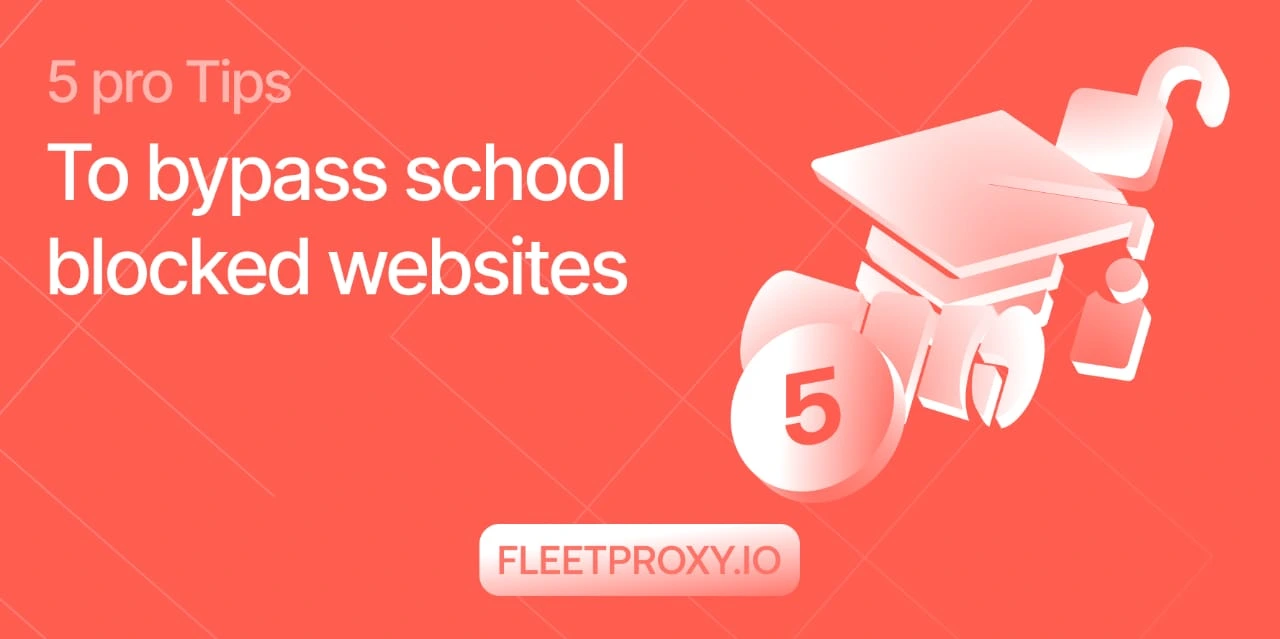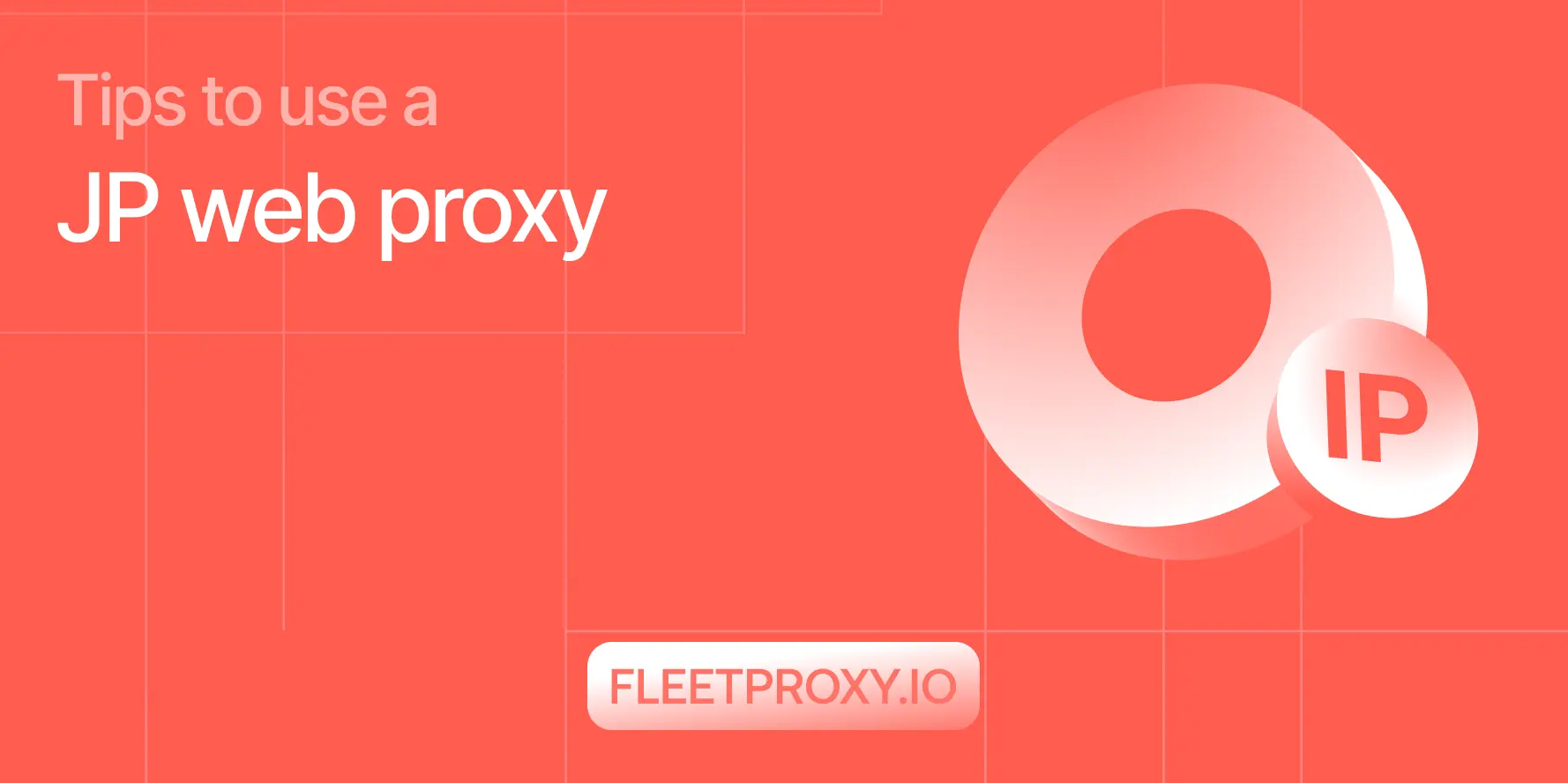5 Pro Tips to Bypass School Blocked Websites
News2025/11/11, 12:580 min read
5 Pro Tips to Bypass School Blocked Websites
Ever tried opening a website at school, only to be met with the dreaded “blocked” message? It’s super frustrating, like your shortcut to getting work done just disappeared. While school filters are meant to keep students focused and safe, they often block useful sites by accident.
Don’t worry, here are 5 Pro Tips to Bypass School Blocked Websites, simple and safe ways to access the websites you actually need for homework and projects.
Why Schools Block Websites
To help students remain focused and protect their networks, schools sometimes block certain websites. Here are some reasons why:
• Stay focused: Social media and entertainment sites are blocked to help students focus on their classwork and studying.
• Network safety: These limitations prevent viruses, malware, and hacking, helping to secure the school's network.
• Save bandwidth: Blocking bandwidth-heavy sites like streaming services and online games allows seamless use of educational tools for everyone.
Understand these rules are set with good intentions, but every now and then they also restrict access to helpful tools and sites you need to complete your studies.
Also Read: Unbanned Instagram with IP

1. Use a Web Proxy
A web proxy serves as an intermediary between you and the site you intend to access. It conceals your actual IP address and allows you to visit the site on a different server, assisting you in overcoming site access limitations.
How to use it:
1. Visit a online proxy site, such as FleeProxy.
2. Type the address of the blocked site into the proxy site’s search bar.
3. Hit enter and the site will open using a proxy server.
Tip: To prevent slow loading times or potential security risks, be sure to choose a dependable proxy. As some schools block popular proxy servers, it may take a few tries to find one that works.
2. Try URL Shorteners
Another way to get around filters is to use URL shorteners like TinyURL or Bitly. These services hide website link so you can sometimes get around filters at school.
How to do it:
1. Copy the link to the website you want to visit that is blocked.
2. Put it into the link shortener website to get a new link.
3. Now use this new link to visit the site.
3. Switch to HTTPS
At times, educational institutions may only prevent access to the HTTP version of a site while the HTTPS version remains unblocked.
How to do it:
1. In your browser’s address bar, replace http:// with https:// before the website address.
2. Reload the page and see if it opens.
Because HTTPS connections are secure and encrypted, this small change can often bypass basic school filters, letting you access the site safely and efficiently.
4. Use Translation Tools
Have you heard that some online translators like Google Translate, can be used to access blocked websites? Google Translate shows you the website by putting it through Google’s servers, which can bypass some website filters.
How to do it:
1. Go to Google Translate.
2. Paste the blocked website’s link into the translation box.
3. Click on the translated link to open the site.
Translation tools commonly see web pages as regular text and not full websites which simplifies access to the content.

5. Change DNS Settings
Changing your DNS settings is another clever approach. The DNS, or Domain Name System, translates a website's address into an IP address. By altering this system, you can get around the school filters.
How to change DNS:
• Open your Wi-Fi or network settings.
• Go to “Name servers” or “DNS settings.”
• Replace the default with Google’s public DNS: 8.8.8.8 and 8.8.4.4.
This reroutes your connection through a different server, which may allow access to blocked sites.
Stay Ethical and Safe
You can use these methods to access blocked sites, but ensure to use them wisely. During school hours, try to avoid accessing leisure and risky sites. For school related tasks, studying, and research, use these tips to help you and make sure you are not violating school policies.
Conclusion
Accessing blocked sites doesn’t need to be a hassle. Proxies, URL shorteners, or basic DNS adjustments can help you access sites needed for your homework or school projects in a secure manner. Also remember to follow school guidelines and implement these tips on studying or other productive activities.
These 5 Pro Tips to Bypass School Blocked Websites will help you browse more intelligently and safely, making your online tasks easier and more efficient.
FAQs
Q.1 Is it legal to bypass blocked websites at school?
Ans: You won't be breaking any laws but do keep in mind school regulations. These should only be used for studying or school-related tasks.
Q.2 Do proxies slow down the internet?
Ans: Proxies can slow down the internet. They use another server to send and receive your data.
Q.3 Can URL shorteners work for all blocked sites?
Ans: Sometimes it works and sometimes it doesn't because some filters prevent shortened links.
More popular posts

How much does an IP address cost in 2025?
The IP address cost in 2025 varies across regions. Larger blocks are cheaper per IP but costly overall, while smaller blocks offer more stability, clarity and security. No matter the option, understanding these trends helps businesses make smarter and more cost-effective decisions

Tips to Use a JP Web Proxy to Browse Japanese Websites Safely.
Have you ever clicked on a link to an exciting Japanese video, a regional news article, or a unique e-commerce site, only to be met with a frustrating error message? "This content is not available in your region." This digital barrier, known as geo-blocking, is a common hurdle for international fans of Japanese culture, researchers, and expats alike.

5 Reasons Why PS4 and PS5 Need Proxy Servers
Ever wondered how a simple proxy server can take your PlayStation gaming to the next level? If yes, you’re at the right place. In today’s digital world, gaming is not limited to a pastime activity anymore, it has transformed into a serious passion and even a career option for many.





